
 Hot Topics in 2025: Summer School Is in Session!
Hot Topics in 2025: Summer School Is in Session!
School’s out, but we’re still hitting the science pages! Consider this your hyperhidrosis journal club—bringing you pearls from the latest published research on hyperhidrosis.
Sofdra™
So far this year, key articles have been published in medical journals about the newest hyperhidrosis treatment on the market: Sofdra—a topical gel also known as sofpironium bromide.
Importantly, three of our co-founders and members of the Board of Directors published pooled safety and efficacy data on Sofdra in the Journal of the American Academy of Dermatology, based on two randomized, double-blind, controlled clinical trials. The combined trials included 353 people in the treatment groups and 348 in the control (placebo) groups. Patients as young as nine years old participated, but most were adults who had suffered from underarm excessive sweating for about 14 years. Analysis of the combined results, say the authors, shows “statistically significant and clinically meaningful” improvements in underarm excessive sweating (primary axillary hyperhidrosis) from Sofdra treatment, based on both patient-reported outcomes and objective sweat measurements.
Using a recognized scale for measuring excessive sweating severity (the Hyperhidrosis Disease Severity Scale), the data shows that more than 56% of patients had a 2-point improvement in their underarm sweating severity when using Sofdra, compared to 37% using the placebo. In terms of measured sweat volume (how much sweat output a person had), patients using Sofdra experienced a 138mg decrease in sweating, while those using the placebo decreased their sweating by 114mg. The authors note that, while the placebo (a gel without Sofdra’s active ingredient) gave patients some results in terms of patient-reported outcomes and reduced sweating, this was expected because the gel “has emollient properties and can affect skin function. Additionally, patients with hyperhidrosis experience anxiety about their sweating, and this anxiety could trigger further sweating whereas the hope of receiving treatment could reduce anxiety and anxiety-produced sweating.”
No serious side effects from Sofdra were reported. The most common side effects were dry mouth, underarm pain, blurred vision, dilated pupils of the eyes, underarm redness, and swelling and irritation of underarm skin.
In other Sofdra news, in a letter to the editors of the journal Annals of Medicine and Surgery, eight authors reiterate the usefulness of Sofdra to treat underarm excessive sweating noting its targeted nature (localized to the skin of the underarms), its effectiveness, and its more limited side effects (as compared to those of oral medications.) Their call to action is that more people should be made aware of this treatment option and that it should be made more affordable and accessible. Cost effectiveness studies of Sofdra compared to other treatments, they say, could be especially helpful.
Botulinum Toxin
Shifting focus to another type of hyperhidrosis treatment, a review of research about botulinum toxin to treat excessive sweating of the face, head and scalp (craniofacial hyperhidrosis) found eight published scientific articles on the topic. Combined, these eight studies cover the experiences of 63 patients who received botulinum toxin injections to treat their craniofacial sweating. Analyzing the studies, the researchers conclude that botulinum toxin injections “significantly decrease sweating of the face and scalp and should be considered an effective treatment for craniofacial hyperhidrosis…demonstrating notable efficacy and little to no adverse events.” Indeed, six of the studies (covering 17 patients) reported no side effects from botulinum toxin injections. In two studies, forehead stiffness and eyebrow drooping were the most common side effects (impacting eight out of 40 patients). Of course, because botulinum toxin wears off after about four months, such adverse impacts are temporary and it’s possible that adjustments to dosing or injection technique in future treatments could also help minimize them.
miraDry®
Another interesting recent research study is about the underarm excessive sweating treatment miraDry, its safety, effectiveness, and patient satisfaction. This research was published in the journal Aesthetic Plastic Surgery. It looked at experiences of 139 patients who received a miraDry procedure between 2019 to 2023. The majority of these patients, 86%, needed only one miraDry treatment to achieve significant reduction in sweat severity. Only 22 out of the 139 patients required a second treatment, and 95% of all the patients in the study experienced no or minimal sweating after miraDry. miraDry, the authors found, provided patients with “an immense improvement in quality of life and high satisfaction.” Side effects included bumps or nodules in the underarms, swelling, and underarm sensitivity but these went away on their own within three to six months. There were no long-term complications. Interestingly, the authors noted that in other research, underweight or very thin patients seemed to be more prone to longer lasting side effects from miraDry - which would be something to discuss with your healthcare provider if you are considering miraDry and have a low body weight or might be perceived as “very thin.”
Looking for an even deeper dive into the latest hyperhidrosis data or a different type of beach read? Our Published Scientific Research page is open 24/7 and full of links to hyperhidrosis research papers dating all the way back to the 1970s and beyond.
On-demand hyperhidrosis continuing education programs are also available. Just visit our Medical Education page for our enduring education video series accredited by Eastern Virginia Medical School and for our hyperhidrosis slide-based courses on the World Health Organization online educational network, including: The ABCs of Diagnosing Hyperhidrosis, Sweating and Prosthesis Care, and Shared Deicion-Making. You can also access video demonstrations of botulinum toxin injections for excessive sweating anytime.
We love lifelong learning no matter the season! Thank you to all the medical scientists who continue to expand knowledge surrounding hyperhidrosis and its treatment.
Latest Blogs